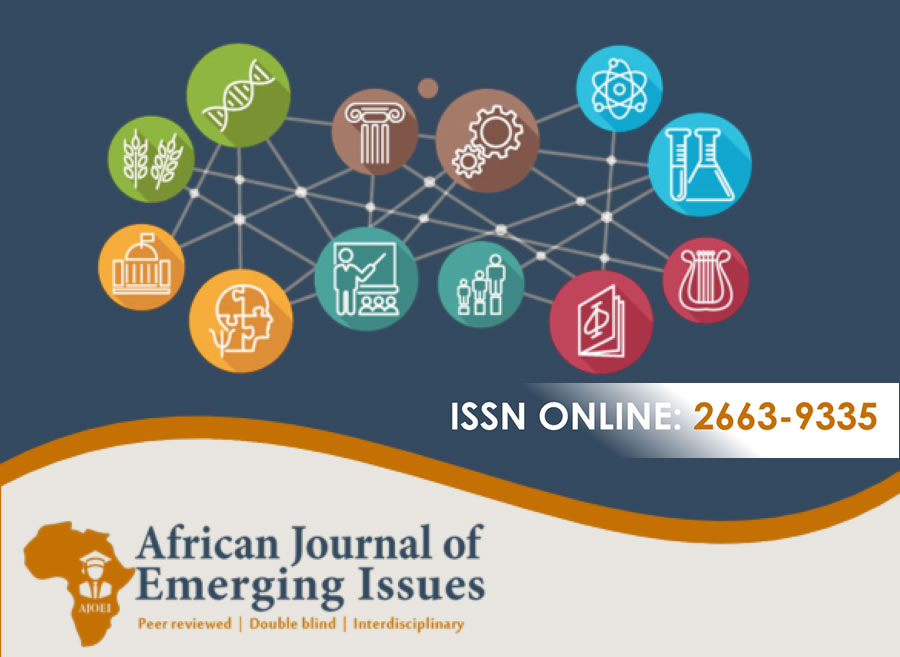MEDIATING ROLE OF EMPLOYEE MOTIVATION ON THE RELATIONSHIP BETWEEN LEADERSHIP PRACTICES AND PERFORMANCE OF CHARTERED UNIVERSITIES IN KENYA
Abstract
Purpose of the study: The purpose of the study was to examine the mediating role of employee motivation on the relationship between leadership practices and performance of chartered universities in Kenya.
Problem statement: Universities in Kenya have faced challenges in recent years which include lowering the enrollment rate of college students, low salary, lack of promotion opportunities, unsatisfactory leader behavior, student discipline problems, uncooperative colleagues and unconducive working environment, lack of effective and efficient quality service delivery to clients, inadequate quality manpower, inadequate research, staff turnover, followed by student anxiety and increased faculty strikes. Such challenges have been attributed to weak leadership practices of university leaders who have not made employee motivation their priority and which consequently has led to the underperforming of most of universities for a long time.
Research methodology: The study used quantitative research approach. The sample size was 245 and included 49 chartered universities operating in Kenya. Data was collected from academic registrars, persons in charge of human resources, finance, quality assurance and student chairpersons. A self-administered, semi-structured questionnaire was used to collect the data. Obtained data was analyzed using descriptive statistics.
Findings: Employee motivation plays a significant mediating role in the relationship between leadership practices and performance of chartered universities in Kenya. The correlation results showed that a positive and significant relationship exists between employee motivation and performance (r=.752; sig=.000). The null hypothesis was rejected. The study established that leadership practices and employee motivation are positively associated with performance of chartered Universities in Kenya.
Conclusion: The study concluded that employee motivation has significant mediating role on the relationship between leadership practices and performance of chartered Universities in Kenya
Recommendations: The study recommends that the university management board should pay more attention to both intrinsic and extrinsic motivational factors to eliminate employees' dissatisfying factors and improve organizational performance.
Keywords: Leadership practices, employee motivation, performance, Chartered Universities, Kenya
References
Afful-Broni A. (2012). Relationship between motivation and job performance at the University of Mines and Technology, Tarkwa, Ghana. Scientific Research, 309-314.
Akomolafe, C., & Ibijola, E. (2014). Employee and Students' Perception of Students’ Participation in University Governance in Ekiti and Ondo States, Nigeria. International Journal of Learning and Development, 4(2), 73-81.
Armstrong, M. (2010). A handbook of performance management (10th ed.). Kogan Page Limited.
Bates, S. (2008). Motivate like a CEO: Communicate your strategic vision and inspire people to act! McGraw-Hill Professional.
Ghosh, P., Chauhan, R., & Rai, A. (2015). Supervisor Support in Transfer of Training: Looking Back at Past Research. Industrial and Commercial Training, 47(4), 201–207.
Langton, N., Robbins, S.P. Judge, T.A. (2016). Organizational behavior: Concepts, controversies, applications. Pearson Canada Inc.
Lee, M.T., & Raschke, R.L. (2016). Understanding Employee Motivation and Organizational Performance. Journal of Innovation & Knowledge, 1, 162-169.
Mbithi, A. M., K’Obonyo, P., & Awino, Z (2016). Transformational Leadership, Employee Outcomes, and Performance of Universities in Kenya. DBA Africa Management Review, 6(2), 1-20. http://journals.uonbi.ac.ke/damr
Mugenda, O.M., & Mugenda, A.G. (2013). Research methods: Quantitative and qualitative approaches. Acts Press.
Muhammad, A.S, Bakar, N.A, Mijinyawa, S.I., & Halabi, K.A (2021). Impact of motivation on students’ academic performance: A case study of university Sultan Zainal Abidin students. The American Journal of Innovative Research and Applied Sciences, 1(6), 221-226. www.american-jiras.com
Mulili, B. M. (2014). Corporate Governance in Kenya’s Public Universities. Journal of Applied Research in Higher Education, 6(2), 342–357. http://dx.doi.org/10.1108/JARHE-02-2013-0008
Mwiria, K., & Ng’ethe, N. (2006). Public university reform in Kenya: Mapping the key changes of the last decade. East Africa Educational Publishers.
Noe, R.A. (2010). Employee training and development (5th ed.). McGraw-Hill.
Numbu, L.P., & Bose.U. (2019). The Impact of Motivation on Employee’s Performance: Case of South Ural State University. International Journal of Research and Analytical Reviews (IJRAR), 6(1), 825-831. www.ijrar.org.
Nyamboga, T.O, Gwiyo, J.S., Njuguna, F.W., Waweru, S.N., Nyamweya, B. O., & Gongera, G. (2014). A critical review of the leadership styles on the performance of public secondary schools in national examinations in Tana River County, Kenya. Journal of Education and Practice, 5(22), 197-220.
Okeyo, W. O. (2017). Student Unrest in Public Universities in Kenya: The Nexus Between Principles of Governance and Student Leadership. European Scientific Journal, 13(31), 159-184. Doi: 10.19044/esj. 2017.v13n31p159
Robbins, S.P., & Judge, T.A. (2017). Organizational behavior (17th ed.). Pearson Education Limited.
Tschannen-Moran, M., & Gareis, C. R. (2015). Faculty Trust in the Principal: An Essential Ingredient in High-Performing schools. Journal of Educational Administration, 53(1), 66-92.
Wanzala, W. (2013). Quest for Quality and Relevant Higher Education, Training and Learning in Kenya: An Overview. Education Journal, 2(2), 36-49. doi: 10.11648/j.edu.20130202.13
Yusoff, W.F.W., Kian, T.S., & Idris, M.T.M. (2013). Herzberg’s Two Factors Theory on Work Motivation: Does its Work for Today’s Environment? Global Journal of Commerce & Management Perspective, 2(5), 18-22.
Zlatea, S., & Cucu, G. (2015). Motivation and Performance in Higher Education. Procedia - Social and Behavioral Sciences, 180, 468 – 476.





